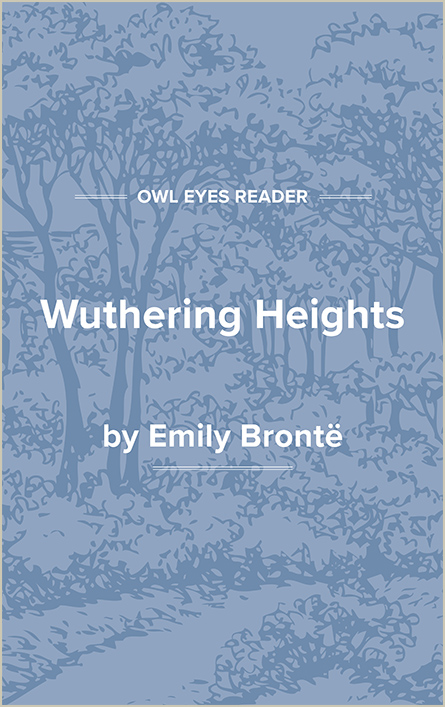Study Guide
Analysis Pages
Emily Brontë Biography
Early Lives
Patrick Brontë was a powerful force in his family’s personal and creative life. He was born in Ireland in 1777 and overcame poverty to attend Cambridge University in England. The self-disciplined, hard-working young man became a minister in the Church of England and married Maria Branwell in 1812. They had six children in seven years: Maria, Elizabeth, Charlotte, Patrick Branwell, Emily Jane, and Anne. In 1820 Patrick moved his family to Haworth, England, where he was appointed minister for life. Maria died of cancer in 1821 at age thirty-eight, leaving Patrick with six small children.
Even after they became adults, the Brontë sisters seldom ventured far from Haworth, the center of their creative lives. The Brontë home was cold and damp, and the town suffered from the effects of open sewers and industrial pollution. Cholera and tuberculosis were common, and the average life expectancy in Haworth was only twenty-six years. It was a rough provincial town, and the family, while respected and well liked, had little social contact with townsfolk. The Brontë children turned to each other for companionship and entertainment. Although early Brontë scholarship portrayed Patrick as a tyrannical father, later research presented him more favorably. Defying the patriarchal values of his day, he educated his daughters and encouraged them in their creative efforts.
After Maria died, Patrick sent his four oldest daughters to the Clergy Daughters’ School at Cowan Bridge, probably the model for Charlotte’s vivid portrayal of the harsh conditions in Jane Eyre’s boarding school. After the two oldest girls became ill, Patrick brought his daughters home. Within a five-week period in 1825, Maria and Elizabeth died from tuberculosis. During the next six years Patrick educated the children himself.
The children found the outside world intimidating. In 1831 Charlotte went to Roe Head, a private school that she first attended as a student and then later returned to briefly as a teacher. Emily and Anne attended Roe Head for a short time but were unhappy away from home. In 1842 Charlotte and Emily attended a private school in Belgium, where Charlotte remained until 1844. The three sisters sometimes worked as governesses, which enriched their writing by exposing them to diverse social situations and giving them insights into aspects of human nature from which they were sheltered in Haworth.
Life’s Work
While the young Brontë women found their ventures out into the world emotionally trying, their intellectual and creative lives blossomed in Haworth. In 1826 Patrick gave Branwell twelve toy soldiers. Each child chose a soldier and named it after a personal hero and then wrote and performed plays about the character. They set their stories in an imaginary African kingdom called Angria; later Emily and Anne created their own realm, which they named Gondal, and located it on an island in the Pacific Ocean. Their fantasy worlds satisfied their emotional needs more than their bleak surroundings did. Charlotte did not free herself from her obsession with Angria until 1839, and Anne and Emily were still writing about Gondal in 1845. Angria and Gondal served as a deep well for the Brontës’ creative lives. They populated their kingdoms with people from history and from contemporary society pages. They laid out cities, devised geographies and drew maps, wrote their kingdoms’ histories, and incorporated the social and political controversies of their own day into Angria and Gondal. They painted and wrote poetry, drama, prose, and historical narrative.
Charlotte had a wider audience in mind. In 1845, she convinced Emily and Anne to join her in publishing a collection of their poetry, entitled Poems by Currer, Ellis, and Acton Bell (1846). Since the patriarchal Victorian society seldom took female writers seriously, they published their book under male-sounding pseudonyms: Currer (Charlotte), Ellis (Emily), and Acton (Anne) Bell. Even before the...
(The entire page is 2,123 words.)
Owl Eyes subscribers get unlimited access to our expert annotations, analyses, and study guides on your favorite texts. Master the classics for less than $5/month!

